Hello! I just bought dso203 2.72 hard and firmware. I was playing around with it out and i found out that my analog channel is rising much later then digital channel… more faster the signal less time is the difference (see pictures). I tryed all kinds of things, even tryed at aa battery to see if it has something to do with signal generator and its relationships to digital channels  but same results (I accidentally overraised my first pictures where i tryed that)
but same results (I accidentally overraised my first pictures where i tryed that)
i saw picture before i got my scope where it was opposite (digital was slower then analog)
so what gives? is my scope broken or is this some kind of improvement or update?? is that normal? seems like some kind of software thing to me becouse difference between risings differs with time base that is being used. Maybe someone smarter can enlighten me? 
Also could someone tell me how much is the max input to my scope?
I have aluminium housing and it says
CH A/CH B ± 40V pk Max
CH C/CH D input 0-5V
I read on the web that it can take 80 volts at A and B and 3 volts at C and D…
The slower response of the digital channels is a known characteristic caused by the protection diodes used on the digital inputs. The parts chosen for this have high capacitance (~100pF) which combined with the series resistance (11K) leads to the slow response. You seem to be seeing the opposite. That might be an effect of the firmware not lining the buffers up correctly. Have you tried any different firmware?
3 options for any digital delay; live with it, remove the protection diodes and have a bit more risk of ESD problems, replace with a low capacitance protection diode. I went for the last option using a TPD2E009DBZR which is a component designed to protect USB. It is a little bit smaller but does drop in as a replacement and has lower than 1pF capacitance so the rise time degradation goes away.
See http://www.seeedstudio.com/forum/viewtopic.php?f=26&t=1978
On the max voltage it is a bit complicated …
-
With 2.72 hardware they started putting protection diodes directly across A/B inputs, supposedly to meet CE regs. These had a breakdown voltage of about 30V. Putting more than this volts on can cause these diodes to fail if the source can supply current and this normally then results in a permanent short on the channel. Some owners remove these diodes as in reality they offer no extra protection. There was some discussion the manufacturer might start leaving these out but I don’t know whether that happened. See http://www.seeedstudio.com/forum/viewtopic.php?f=26&t=4922
-
Pre 2.72 or with diodes removed then the input circuit is protected by fairly large series resistors so there is very little risk of direct damage from relatively high voltages. The decoupling capacitors for AC are rated at 100V so that is definitely 1 limit.
-
The metal shell version has the additional risk that a fault might lead to the input volts getting onto the shell and being exposed to the operator, heightened by the fact that with battery the shell won’t be safety earthed.
-
2 and 3 taken together led to the plastic pre 2.72 being rated for 80V while the metal shell was rated lower at 40V. The latter being a safer voltage to expose even under fault conditions.
-
On the digital side the sense circuits are 3.3V. There is a series resistor of 11K and so combined with the diodes built into the FPLA it is regarded that it is safe to use 5V inputs with these. I think the current limit of the diodes actually makes it safe for higher than this but I would not routinely try to use these on higher than 5V nominal logic.
The factory supplied software is reported to have a few issues. I don’t have direct experience of the 2.72 factory software as I have a 2.70 device but on that I use primarily the Wildcat scope version which performs very stably and has a lot more functionality.
File corruption when storing files is one reported weakness of standard firmware.
Updating firmware is actually a very simple process and pretty safe. It is made a bit more complicated by the difference between the 2.7 and 2.72 hardware. Most of the alternative software was originally developed for the 2.7 (2MB) model. The 2.72 hardware has 8MB memory so you have to make sure you get the right versions of firmware that are compatible. There is no risk of damaging the device by using the ‘wrong’ firmware but it will either not work or may work except for storage routines.
You can get more details by checking out the threads around the 8MB device.
Hello and thanks again for great info! I am way over my head with these firmware stuff… i cant find what firmware is what and if its the newest version. does wildcat version support 2.72hw? could you provide link to newest version of it? anyway i ended up copying GABOUI_1.hex (i found it on small cd that came with dso) in to dso after turning it on while pressing play/pause button. it now has new GUI in it but it still dosnt let me see bmp’s. also i understood that i can put multiple apps in dso if i just press different button while turning dso on is that right? well my pc just says it dosnt regonice usb device and dso just keeps beeping  it only regonises if i press play/pause button or nothing. what should i do?
it only regonises if i press play/pause button or nothing. what should i do?
There are 2 types of firmware that you normally load both using the hex method.
SYS files are a bit like the BIOS of a PC and provide a library of access functions. There is only one of these loaded into the device at any one time.
APP files (like the GABOUI_1.hex file) provide the application functionality. The device has 4 memory slots for these allowing up to 4 different applications to be loaded. The number in the hex file normally means which slot is goes into. You select which 1 by pressing 1 of the buttons while turning on. No button is APP1, second button is APP2 etc. Button 1 is reserved to get you into the firmware loader.
The disk you see when you plug into a PC depends on which mode your are in. If you have pushed button 1 then you are in firmware loading mode and you will see the special DFU disk for loading hex files. If you are running a normal APP you should see the APP type disc where saved files etc are stored. If you don’t see this then it probably means the APP isn’t working correctly. For example if you have loaded a 2MB type APP onto a 8MB device then this miay stop the disk from working.
Now although there are 4 slots many of the bigger APPS like main scopes take up 2 adjacent slots so that does limit where you can load things. E.g. loading an APP into slot 1 normally takes up slot 1 and 2.
You can get the latest version of Wildcat by looking near the end of the community app thread.
First I would practice reloading your normal factory APP back on so you feel confident you can get back to where you started from.
![]() but same results (I accidentally overraised my first pictures where i tryed that)
but same results (I accidentally overraised my first pictures where i tryed that)![]()
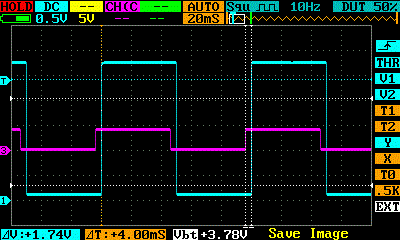
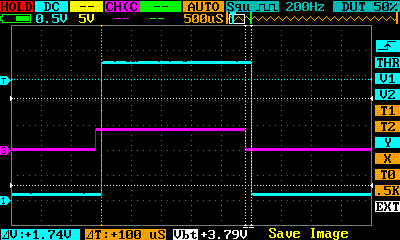
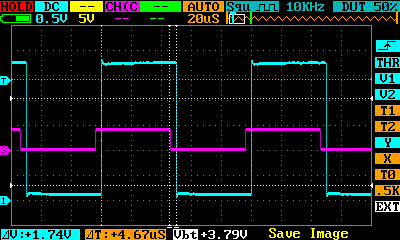
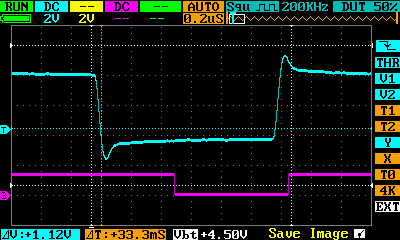
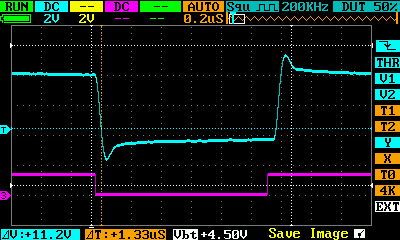
 it only regonises if i press play/pause button or nothing. what should i do?
it only regonises if i press play/pause button or nothing. what should i do? i got the wildcat running now
i got the wildcat running now  i really didnt know what i did or was doing but i did it
i really didnt know what i did or was doing but i did it  i also managed to downgrade my system from 1.62 to 1.60… that sucks, cant find the newer one anymore. thanks for the help!
i also managed to downgrade my system from 1.62 to 1.60… that sucks, cant find the newer one anymore. thanks for the help! i have used wildcats firmware now and its very cool and works like a charm
i have used wildcats firmware now and its very cool and works like a charm  until now that i was again taking some known good captures at work (i was trying to make known good pattern of nissan qashqais cam and crank signal synchronisation) and i was saving whole bunch of bmps and i was just about to get finished and saved 13. photo and it said err.
until now that i was again taking some known good captures at work (i was trying to make known good pattern of nissan qashqais cam and crank signal synchronisation) and i was saving whole bunch of bmps and i was just about to get finished and saved 13. photo and it said err.  now i had to format disk to get rid of the un openable photos and my settings and calibration went too
now i had to format disk to get rid of the un openable photos and my settings and calibration went too  seems like i will be saving only 12 photos at max from now on… anybody else having this problem? or is my hard disk defective? shame that it has ‘‘new bigger 8mb memory’’ but its not possible to use only fraction of it
seems like i will be saving only 12 photos at max from now on… anybody else having this problem? or is my hard disk defective? shame that it has ‘‘new bigger 8mb memory’’ but its not possible to use only fraction of it